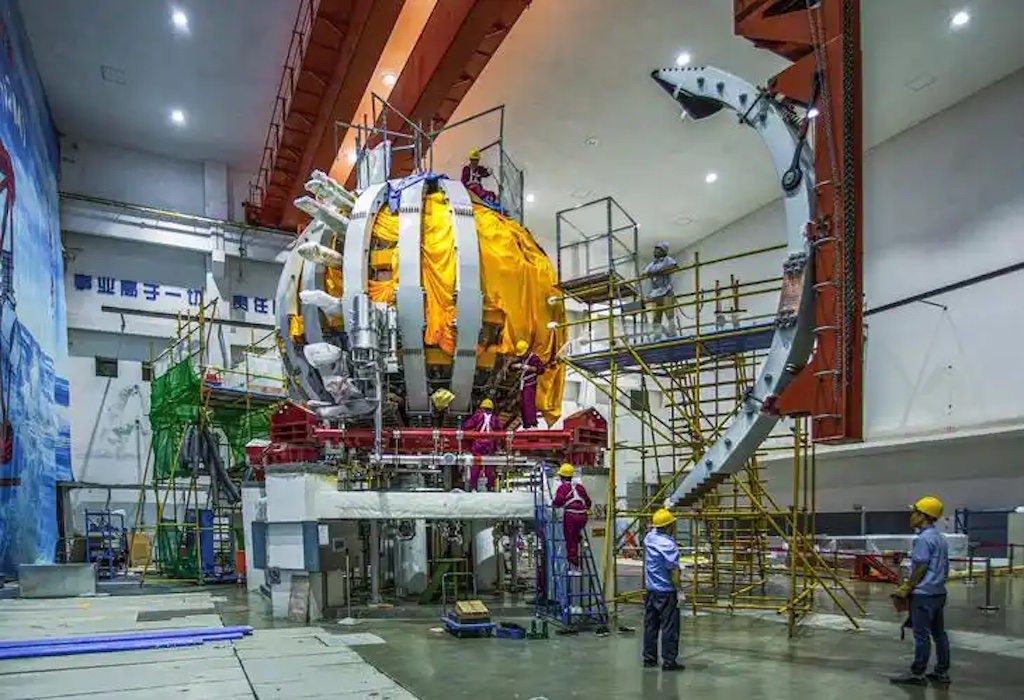1. Technological Leap and Its Implications
EAST’s success hinges on full superconducting magnetic confinement technology, integrating ultra-high vacuum and cryogenic systems. Key advancements include:
- Plasma Stability: Controlling 100-million-degree plasma (6–7× hotter than the Sun’s core) for 17 minutes, a prerequisite for sustained energy output.
- Material Breakthroughs: Tungsten-copper divertors and neutron-resistant alloys mitigate particle erosion, critical for reactor longevity.
These innovations position China as a leader in fusion research, with three of the world’s top plasma confinement records.
2. Roadblocks to Commercial Viability
Despite progress, fusion energy faces hurdles:
- Energy Gain: Current experiments operate at a net energy loss. EAST targets a 5× energy gain by 2028 and 20× by 2035 through compact reactor designs.
- Radiation Damage: Prolonged neutron exposure degrades reactor walls. Liquid lithium blankets and advanced alloys are under testing but require years of validation.
- Scalability: Transitioning from experimental devices to power plants demands massive infrastructure. China’s 2035 demonstration reactor plan highlights this gap.
3. Global Race and Ethical Considerations
China accelerates fusion development via public-private partnerships, securing $200 million in component contracts7. Internationally, projects like ITER and private ventures (e.g., Helion Energy) compete fiercely. However, ethical challenges persist:
- Geopolitical Shifts: Fusion dominance could reduce reliance on fossil fuel-rich regions, reshaping global power dynamics.
- Equity Concerns: High costs and intellectual property barriers risk limiting access to advanced nations.
Conclusion
While EAST’s breakthrough marks a pivotal step, commercial fusion remains decades away. Experts predict demonstration reactors by the 2030s, but achieving clean, limitless energy requires overcoming technical barriers and fostering inclusive collaboration. The fusion era’s dawn depends on balancing innovation with ethical responsibility.
















